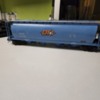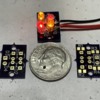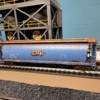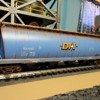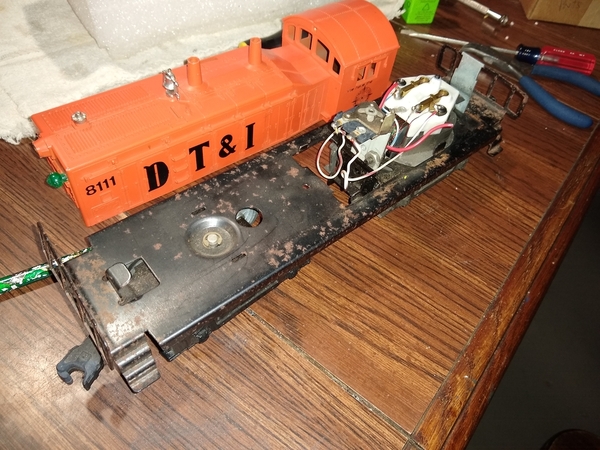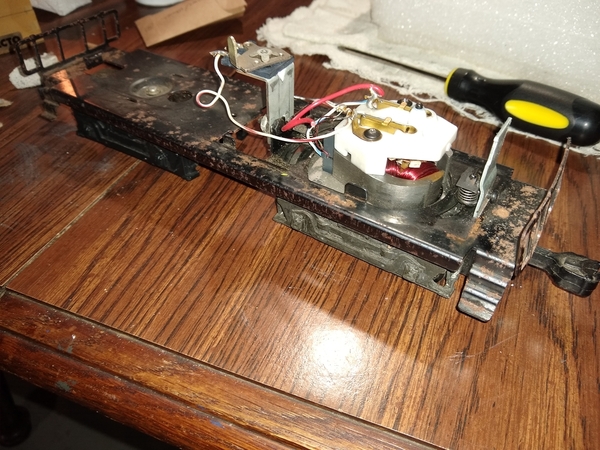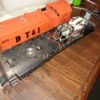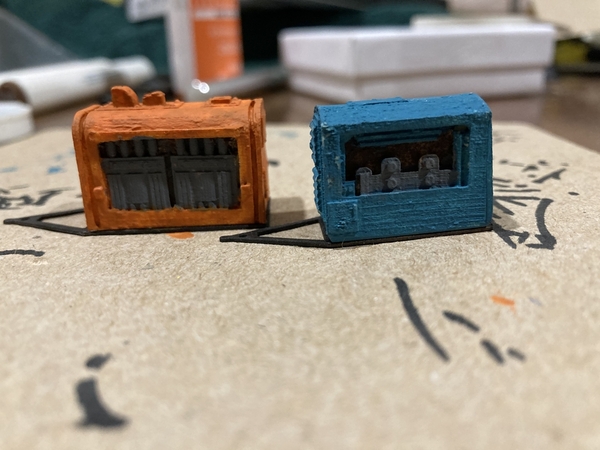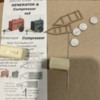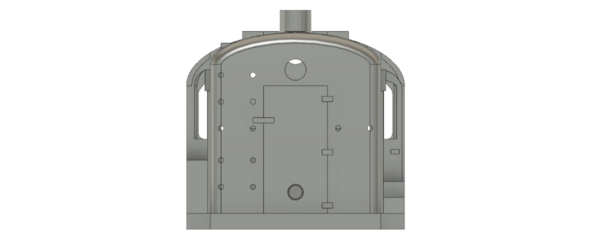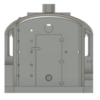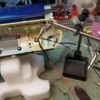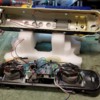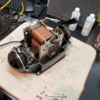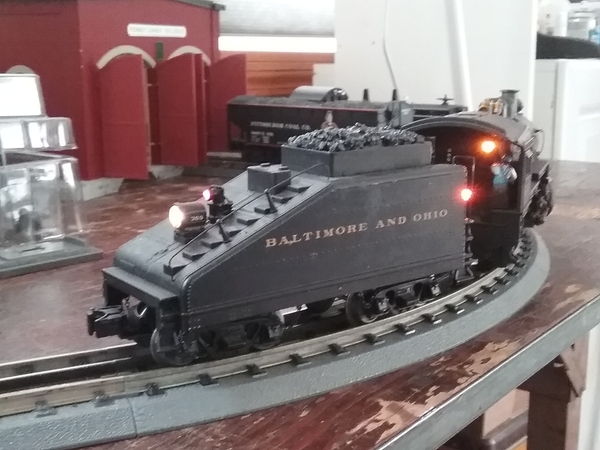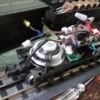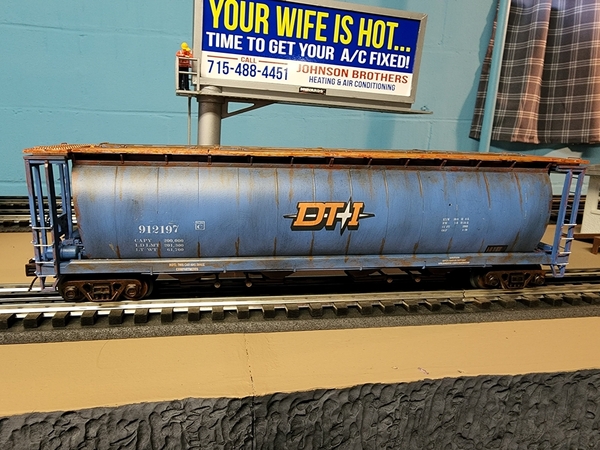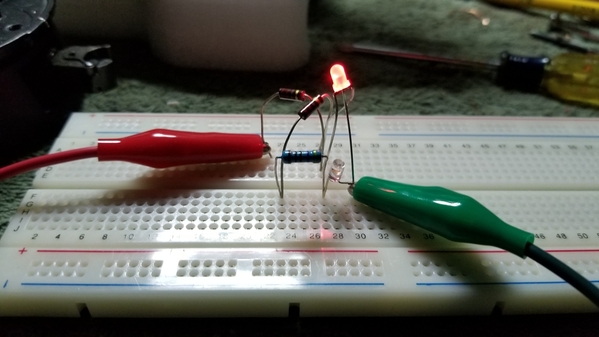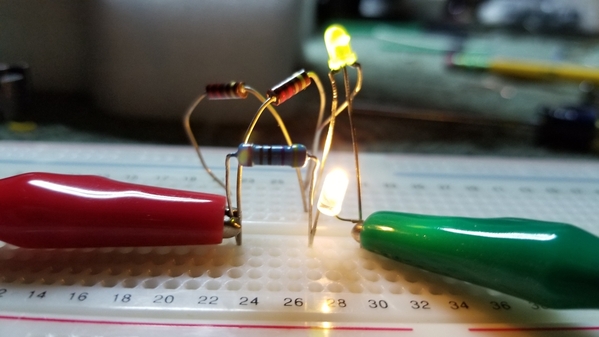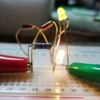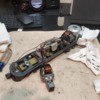Right now, my work bench is a hopper car hospital. I had collected some 1930's die cast O scale aluminum and zamack cars in the past and tucked them away. I'm 84 now and a few of them are older than I am. Then back in 2009 I bought three Intermountain plastic kit-built B&O hoppers needing some repairs, rather than building them from kits I already had. They can be quite tedious to do!
Well, their day arrived a few weeks ago and one-by-one they went through the shop, and most are ready for paint and lettering.
First, this completed Lehigh Valley two-bay USRA hopper, from a cast aluminum Scale Craft kit of 1936. Bought used and rebuilt. An Intermountain coal load for their plastic USRA hoppers is a perfect fit!

Three Intermountain B&O N-17 class hoppers. Built by someone other than me from kits, these notoriously fragile cars with fine detail needed varying levels of repair work. Anything that is not black is a replacement part I made. These cars will be touch-up painted to keep the original pre-WWII B&O lettering. Intermountain produced their kits in the 2000's.

Below is a Min-I-Scale diecast zamack four-bay hopper, in 17/64" to the foot scale. It was a mid-1930's effort to get accurately scaled cars for 2 1/2" O gauge track. Maybe the ultimate in kit simplicity, it was three castings assembled with four screws, had pre-assembled trucks and used Model Die Casting working couplers. While detail on it is rather heavy (and when assembled the car weighs and impressive 2 1/4 lbs.!), it is an accurately done B&O Class W-2a car of the late 1920's. B&O fielded a fleet of over 5,000 of these 70-ton capacity cars from 1926-1929, the only major railroad using this design at the time. Min-I Scale was a 1930's producer. The two body halves are assembled with two steel alignment pins. Modern day epoxies make assembly and sealing the seam between the body halves much easier. The underframe ends were milled to receive 700 series Kadee metal couplers in plastic coupler boxes.
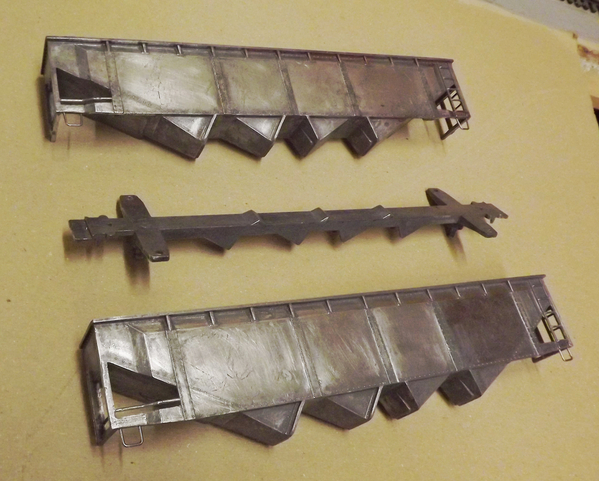
This one below is a sand cast aluminum kit by an unknown maker. Maybe Scale Craft, but I'm not sure. It is relatively light in weight, a shade over 1 lb. It is also 17/64 to the foot scale and is made up of five castings assembled with 20 2-56 x 1/8" flat head screws and four 3-48 x 1/4" flat head screws. All the screw heads need to be covered. Here the body has been given a coat of primer with Micro-Mark rivet decals added. The model is fitted for Intermountain trucks and Kadee couplers.

Now for an all-steel two bay hopper expertly soldered together. The steel used is .015" thick, which is heavier than the tinplated steel Henry Beeson used for his O scale Rail Craft kits of the late 1930's - early 1940's. This model is also 17/64" to the foot scale, and dates from that period. It rides on Scale Craft (?) sprung trucks and I fitted it with Kadee couplers and a few added details.

Last, this K-Line die cast zamack hopper, which is a clone of the famous Lionel 1941 semi-scale die cast hopper. It accurately models a B&O Class W-2b, in having a power hand brake and five-rung corner ladders in place of individual grab irons. Modifications were made to the end frame castings for 2-railing it and installing Kadee couplers, along with added under-fame and air brake line details on the body.

Now, a lot of Scale Coat 1 satin finish engine black will be air-brushed to get them ready for final lettering. That will be done out-doors after this uncertain Spring weather breaks with some warm, still, dry days in NE Oklahoma.
S. Islander









